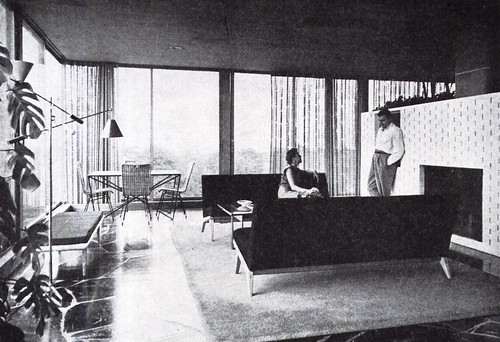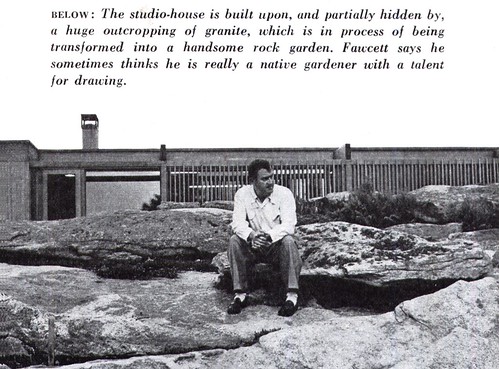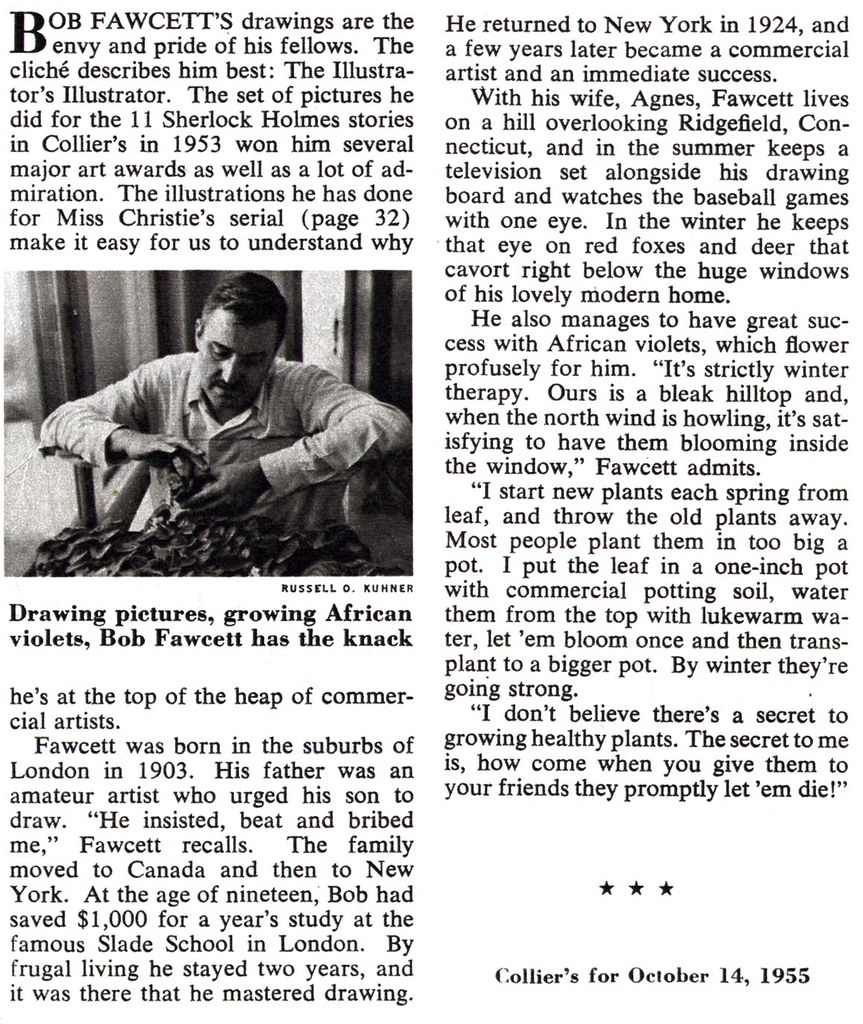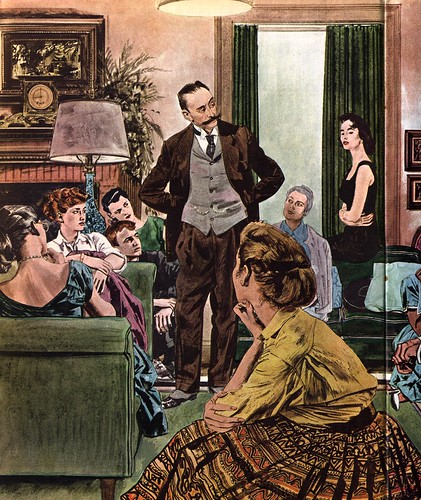
The floors were made of scrap marble from Vermont, furniture and panelling was done in birch, white brick from Arkansas was used for the fireplace that divided the livingroom from the kitchen...

... and Washington State cedar framed the ten-foot-high, double-paned windows from California.

During the long Connecticut winters, Fawcett raised African violets in his spare time, a hobby he was so successful at that he kept friends in constant supply with them.

The following year, in conjunction with the illustration at bottom, an anecdote appeared in Collier's again mentioning Fawcett's fondness for raising violets.
More interesting to me though, is the reference to how Fawcett saved a thousand dollars by age 19 so that he could attend the Slade School in London. Stop and think about that for a moment: Fawcett would have been nineteen in 1922. Imagine a 19-year-old raising a thousand dollars in 1922! What must he have done... how hard must he have worked to save that kind of money. The article says that by frugal living Fawcett managed to stay at Slade for two years and that it was there that he mastered the art of drawing.

In the Illustrators Q&A mentioned in Friday's post, Fawcett was asked, "I have often wondered if your work at the Slade School of London and under Edmund Sullivan was of value to you as an illustrator."
Fawcett replied, "At Slade, academic and searching drawing was so insisted upon that draftsmanship became second nature. I did nothing but draw from the model eight hours a day for two years. This experience created a backlog to which I constantly refer even now. I may disagree with some of the preceps laid down, but I will never regret the Spartan grind we went through then."

"As I look back upon it, the standards were so rigid and academic (in the best sense) that in self-defense one had to find a personal expression or be reduced to an automaton, but I think it was not until ten years later that I was able to gain access to what that drawing was doing for me at the time. In the end I think that this kind of training, a discriminating eye and an obedient hand, achieved what it set out to do. The student became so aware of the normal aspect of things that accuracy became no longer interesting, and energy was released for a more creative kind of seeing."
My Robert Fawcett Flickr set.
An "Illustrator's Illustrator"
ReplyDeleteThanks for all that background, Leif!
It makes me feel like going into seclusion to learn more about drawing...
That quote on training leading to style as a defense against becoming and machine is SO perceptive. What a style! So dependent on interpretive draftsmanship set free by training!
ReplyDelete